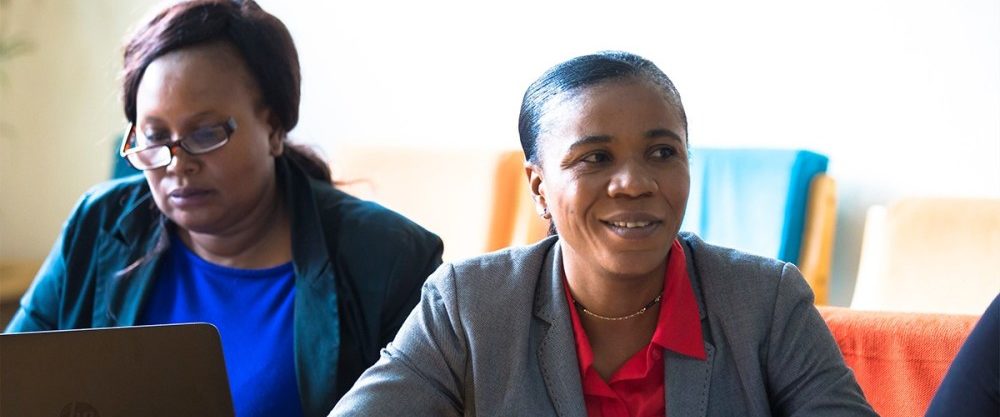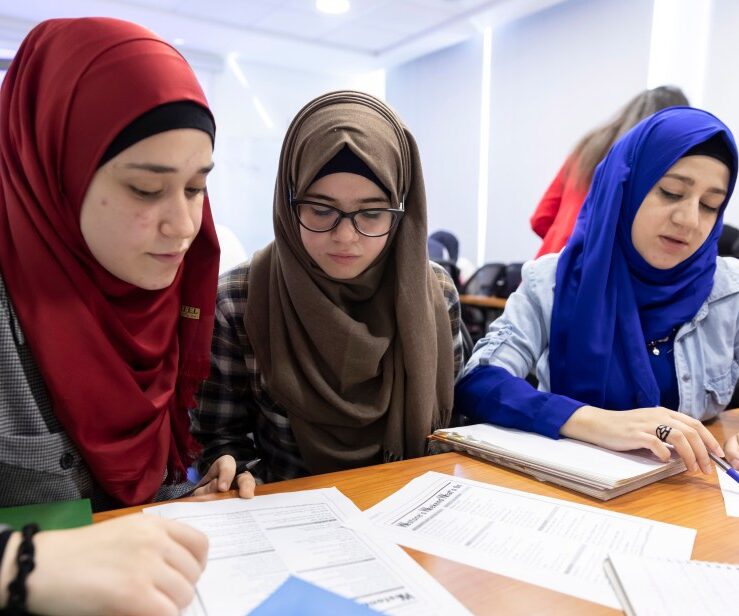What is CBE?
Competency-based education (CBE) is, as its name suggests, learning based on developing and demonstrating competence, so prioritizing what a student can do over how much time they put in. Southern New Hampshire University’s direct assessment competency-based curriculum is made up of real world projects which count toward skills-based “goals.” The program blends academic content with the soft skills and core competencies that employers are looking for.
This is a major shift from traditional degrees and credentials, which mostly rely on time-based measurements like credit hours, courses, and semesters. But a growing number of universities are adapting existing degree programs to the CBE model or building original CBE degree programs from the ground up.
Measuring Time vs. Measuring Learning
CBE has emerged because educators and employers are looking for innovations that improve on what has been a “black box” system. Traditionally, time-in-seat has been presumed to get learning results, so, starting from that basis, universities could say that so many hours equals a course, and so many courses equals a degree. Students and employers understood that degrees generally added up to comparable bodies of knowledge, but a degree didn’t clearly signal what a graduate was able to do.
Increasingly, though, employers want more clarity about what skills and knowledge a degree represents, and what the employee brings to the job from day one. CBE is essentially an innovation that changes the rules to measure units of learning rather than measure units of seat time. It turns the black box into something transparent so stakeholders know what a student has learned and can do.
As Paul LeBlanc, the president of Southern New Hampshire University, often puts it, “In most higher education, time is the constant and learning is the variable. In competency-based education, learning is the constant, and time is the variable.”
Transitioning from the traditional model isn’t easy, but colleges and universities have been supported in recent years by The Competency-Based Education Network (C-BEN), a 20-member consortium that Southern New Hampshire University hosted in its first year. C-BEN defines competency-based education as an academic model in which the time a student takes to demonstrate competency is flexible while the expectations about learning are constant.



Competencies, Not Skills
What is a competency, exactly? It is the capacity to apply skills, knowledge, or abilities to a real-world situation. It’s more than theoretical knowledge, a learning outcome, or a skill by itself. If a competency is mastered, it means the student has a knowledge or skill and that they have demonstrated they know to use it — often in a real-world context.
Our students learn to plan, direct, and coordinate the operations of organizations, including formulating processes, managing daily operations, overseeing financial management, and planning the use of materials and human resources.
It may help to think of a competency as a can-do statement. For example, a competency in SNHU’s Bachelor of Arts in Management degree program asks that a student “Can evaluate risks and benefits of international transactions and trade.” To show mastery, students must prepare a report and series of presentations to help a fictional company expand international sales.
In most CBE programs, students must master a series of competencies to pass a course. Direct assessment competency-based education, however, does away with the course structure entirely. Instead, students complete multiple projects that will demonstrate mastery of the necessary competencies. These projects range from writing papers that demonstrate research and analysis to working through simulations of real-world, career-based problems that allow students to practice the application of skills and knowledge.
Rather than focusing just on what academics believe a class should contain, the projects are based on market research and input from industry leaders, in combination with academic experts. The result is a graduate who has engaged in real-world tasks and can demonstrate the competencies employers in today’s complex workplaces demand.
These projects make up the 20 goals required to earn an associate and another 20 goals for a bachelor’s. For example, the goal “Examine Ethical Perspectives” includes a series of projects designed for the learner to understand important figures, traditions and concepts in moral philosophy as well as the analysis, critique and construction of ethical arguments.
Not Everyone Learns The Same Way
Direct assessment competency-based education is ideally suited for the refugee learner. It eliminated the concept of the “course” because, like the credit hour, the course is a time-based container for learning that doesn’t account for the variable needs of learners. The program is delivered fully online and is available 24/7, from anywhere in the world. Since we have removed the time and course restrictions, learners can move through projects where they can demonstrate competence quickly, and take their time in areas where they need to acquire more knowledge.
There is no failure. Instead, we use “not yet” when a student has yet to prove mastery. Students may submit their work repeatedly until they have proven complete mastery with the project objectives. Their work is assessed and mastery determined using a rubric applied by reviewers who are experts in the goal’s content area.
Different Structure, Same Credit
Each degree (AA or BA) consists of 20 goals. Each goal aligns with a traditional degree course and qualifies for three college credits. So earning an associate degree yields 60 academic credits, on par with most traditional associate degrees. Graduating with a bachelor’s earns the learner a total of 120 credits, again on par with traditional college systems.
A US-accredited degree is one of the most versatile and appropriate degree options for refugee and displaced students because it has the highest likelihood of being recognized by employers and governments across the globe.
